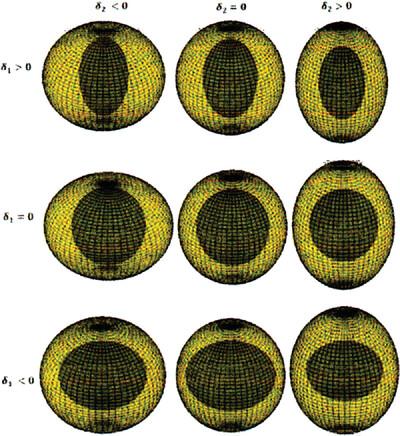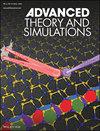尺寸各向异性和氧化环境对含杂质CdSe/ZnS椭圆核壳量子点复介电响应的影响
IF 2.9
4区 工程技术
Q1 MULTIDISCIPLINARY SCIENCES
引用次数: 0
摘要
本研究研究了自极化、结构各向异性和杂质对HfO2和SiO2氧化物包围的CdSe/ZnS椭球核壳量子点(ECSQDs)复介电功能(CDF)的相互作用,旨在优化其在下一代光电器件中的性能。利用紧密度矩阵的形式导出了线性和三阶非线性光学磁化率χ(3)和CDF的解析公式。数值结果表明,电子能态与核壳椭圆度(δ1和δ2)之间存在复杂的依赖关系,同时由于各向异性量子约束,电子能态沿长、小轴发生红移和蓝移。由于载流子位置的不同,量子跃迁的振荡强度非单调地依赖于层的结构各向异性。更重要的是,计算表明,CDF的实部和虚部谐振峰可以通过介电介质、形状诱导效应和尺寸参数进行精确调制。地核的偏心率似乎比壳的偏心率更能影响计算出的非线性特性的振幅。我们的模型可以通过增强能量约束和保护量子信息免受破坏性干涉机制的影响来优化电子传输。本文章由计算机程序翻译,如有差异,请以英文原文为准。

Inspecting the Role of Dimensional Anisotropy and Oxidized Environment on the Complex Dielectric Responses of CdSe/ZnS Ellipsoidal Core/Shell Quantum Dots with Embedded Impurities
This research investigates the interplay between self-polarization, structural anisotropy and impurity effects on the complex dielectric function (CDF) of CdSe/ZnS ellipsoidal core–shell quantum dots (ECSQDs) surrounded by HfO2 and SiO2 oxides with the aim of optimizing their performance in next-generation optoelectronic devices. Analytical formulas of linear and third order nonlinear optical of susceptibility χ(3) as well as the CDF are derived by compact-density matrix formalism applied to a two-state system. Numerical results indicated that electron energy states exhibited a complex dependence on both core and shell ellipticity (δ1 and δ2) along with witnessed red and blue shifts due to anisotropic quantum confinement along the major and minor axes. The oscillator strengths of quantum transitions non-monotonously depend on the structural anisotropy of the layers due to the different location of carriers. More importantly, computations showed that resonant peaks of real and imaginary parts of CDF could be precisely modulated through the dielectric medium, shape-induced effects and size parameters. The Eccentricity of the core seems to dominate over that of the shell affecting the amplitude of computed nonlinear properties. Our model can be engineered to optimize electron transport by enhancing energy confinement and protecting quantum information from destructive interference mechanisms.
求助全文
通过发布文献求助,成功后即可免费获取论文全文。
去求助
来源期刊

Advanced Theory and Simulations
Multidisciplinary-Multidisciplinary
CiteScore
5.50
自引率
3.00%
发文量
221
期刊介绍:
Advanced Theory and Simulations is an interdisciplinary, international, English-language journal that publishes high-quality scientific results focusing on the development and application of theoretical methods, modeling and simulation approaches in all natural science and medicine areas, including:
materials, chemistry, condensed matter physics
engineering, energy
life science, biology, medicine
atmospheric/environmental science, climate science
planetary science, astronomy, cosmology
method development, numerical methods, statistics
 求助内容:
求助内容: 应助结果提醒方式:
应助结果提醒方式:


